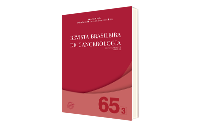Neutropenia Associated with the Treatment of Breast Cancer: Integrative Literature Review
DOI:
https://doi.org/10.32635/2176-9745.RBC.2019v65n3.307Keywords:
Breast Neoplasms, Drug-Related Side Effects and Adverse Reactions, Neutropenia, Drug Therapy, CombinationAbstract
Introduction: Breast cancer is the most frequent neoplasm among women and chemotherapy drugs are used as an alternative to its treatment. Neutropenia is the most serious chemotherapy-induced hematologic toxicity. Objective: To evaluate through bibliographic review the occurrence of neutropenia as hematological toxicity in patients with breast cancer, based on studies that address different chemotherapeutic treatment regimens. Method: Integrative literature review. Data from three databases PubMed, Capes and LILACS were collected. The terms used were neutropenia, breast cancer, chemotherapy e toxicity hematological. The selected articles were published between 2013 and 2018. A total of 101 articles were initially evaluated and 23 were selected. For data analysis, it were extracted information about the number of patients included in the study, age and occurrence of neutropenia, total number and frequency. Results: In total, 19,528 women underwent chemotherapy and were included in the study. Of the 13 chemotherapy drugs reported in the selected studies, the most used regimens were epirubicin, fluorouracil, cyclophosphamide and docetaxel (D-CSF), docetaxel and cyclophosphamide (CT) and docetaxel, cyclophosphamide and doxorubicin (CT). All the therapeutic regimens studied caused neutropenia grade 3 and 4 as hematological toxicity. In nine studies, neutropenia was greater than 50%. Conclusion: Neutropenia has a high occurrence, regardless of the chemotherapy treatment utilized to treat breast cancer. The most associated schemes were platinum/taxanes and cyclophosphamide/anthracyclines/taxanes, which are most often used for their high efficacy.









